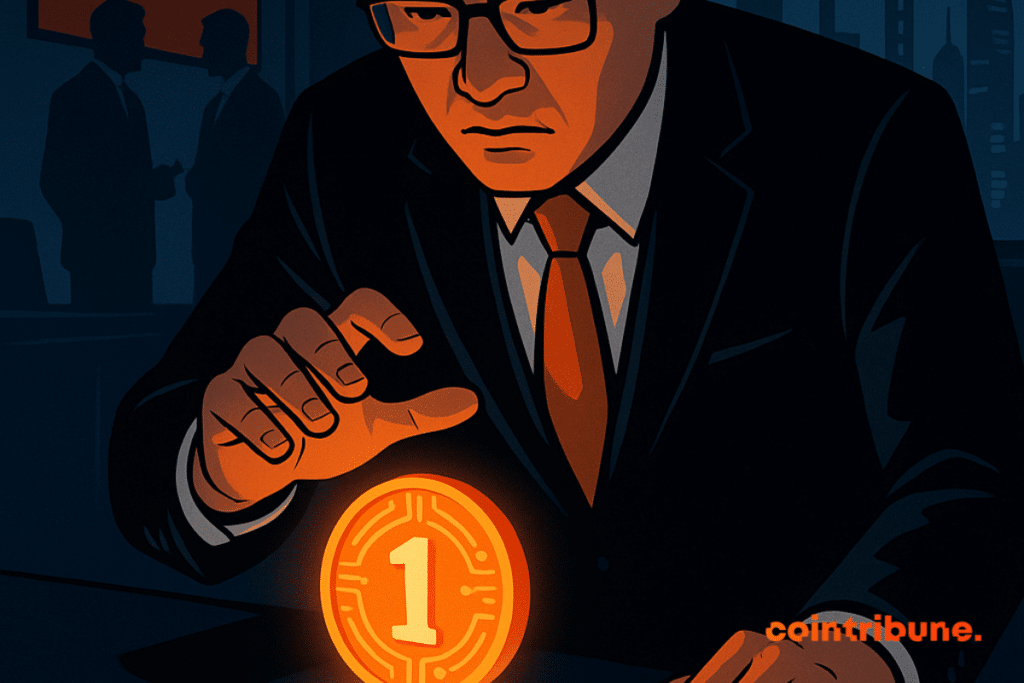Crypto : Alibaba prepares a deposit token as China tightens the screw on stablecoins
As Beijing tightens the grip on stablecoins, Alibaba chooses another path: that of the deposit token backed by banks. This is not a technical detail, it is a full-scale test of the limits of the Chinese model: zero tolerance for private onshore stablecoins, but calculated openness for regulated tokens, useful for exports.

En bref
- Alibaba is preparing a deposit token to simplify cross-border payments without violating China’s strict ban on private stablecoins.
- Beijing rejects private stablecoins but accepts bank-issued tokens because they remain fully regulated and controlled.
- The goal is to speed up international payments while keeping the technology under tight state supervision.
Deposit token: Alibaba’s “bank-friendly” response to Chinese crackdown
Alibaba does not talk about launching “a new crypto”. The group wants to use a technology resembling a stablecoin, but within a classic banking framework. The idea is simple: a deposit token is a blockchain token that represents a direct claim on a deposit in a commercial bank. Legally, it is not a casino chip, it is a regulated liability of the issuing bank.
In practice, Alibaba’s cross-border e-commerce mainly seeks to streamline international payments. Today, an SME selling via Alibaba juggles currency conversions, SWIFT delays, and hidden fees. With a deposit token, settlement could become almost instantaneous, programmable, traceable, while remaining within the banking perimeter understood and controlled by regulators.
This choice does not come out of nowhere. A few days earlier, JPMorgan deployed its own deposit token for institutional clients. The message sent to the market is clear: big banks no longer want to leave the tokenized payments field to stablecoin issuers alone. If banks get involved, they give the State what it demands: innovation, but under surveillance.
Beijing closes the door to stablecoins but leaves a window for bank tokens
For months, China has been repeating the same scenario: technical interest, political rejection. Ant Group, JD.com, and other tech giants showed interest in stablecoins or tokenized products in Hong Kong. Beijing called time out: projects were frozen, clear signals that “made in China” stablecoins will not circulate freely on the mainland.
The implicit message is harsh but understandable. On one side, China pushes its digital yuan (e-CNY), fully public, programmable, controlled by the central bank. On the other, it does not want a jungle of private stablecoins creating competing quasi-currencies, hard to control, and potentially exploited for fraud, money laundering, or unauthorized capital flows.
In this context, Alibaba’s version of the deposit token appears as a political compromise. The token remains tied to a classic bank deposit, under existing regulation, audited, capitalized, supervised. In the eyes of authorities, it is not a new currency but a new technical interface for an old concept: the bank deposit. Crypto remains outside; “bank tokenization” is tolerated as long as it does not challenge the Chinese monetary hierarchy.
This stance aligns with another movement: pressure on research, reports, and seminars dedicated to stablecoins, a dynamic that contrasts sharply with the United States where the Fed, affected by these debates, is regularly pushed to adjust its monetary policy reflection. By cutting off the intellectual oxygen of the sector, Beijing clearly shows it does not want a domestic stablecoin industry to emerge. But it still leaves some leeway to actors willing to evolve within a strictly banking framework and under enhanced supervision.
Offshore, Belt and Road and crypto market: what the deposit token really changes
While China locks down onshore stablecoins, it allows offshore yuan stablecoins and initiatives related to the Belt and Road to develop. These projects target foreign markets, off-continent companies, strategic payment corridors. In other words, the technology serves economic influence but must not disrupt the domestic monetary ecosystem.
Alibaba’s deposit token fits this logic. It primarily targets cross-border payments for merchants, not speculative trading on Binance or DeFi platforms. If the project materializes, it could become an invisible tool for the end user: buy in fiat, sell in fiat, but in between, value flows as bank tokens on a blockchain infrastructure.
For the crypto market, the signal is ambivalent. On one hand, it confirms that the “crypto vs banks” narrative is outdated: the same tokenization mechanisms, instant settlements, and programmability can be captured by banks and big tech without volatile native tokens or mass-market stablecoins. On the other hand, it shows that governments, particularly authoritarian ones, can recover crypto technology bricks while neutralizing its truly open dimension.
The strategic question then becomes clear: is Alibaba opening a breach or closing the door? In the short term, its deposit token could accelerate the global movement toward regulated bank tokens interoperable with existing rails, to the detriment of pure stablecoins issued by crypto companies. In the long term, it tests how far China is willing to go: accept blockchain infrastructure without ever tolerating a digital currency that escapes its control.
Maximize your Cointribune experience with our "Read to Earn" program! For every article you read, earn points and access exclusive rewards. Sign up now and start earning benefits.

Fascinated by Bitcoin since 2017, Evariste has continuously researched the subject. While his initial interest was in trading, he now actively seeks to understand all advances centered on cryptocurrencies. As an editor, he strives to consistently deliver high-quality work that reflects the state of the sector as a whole.
The views, thoughts, and opinions expressed in this article belong solely to the author, and should not be taken as investment advice. Do your own research before taking any investment decisions.